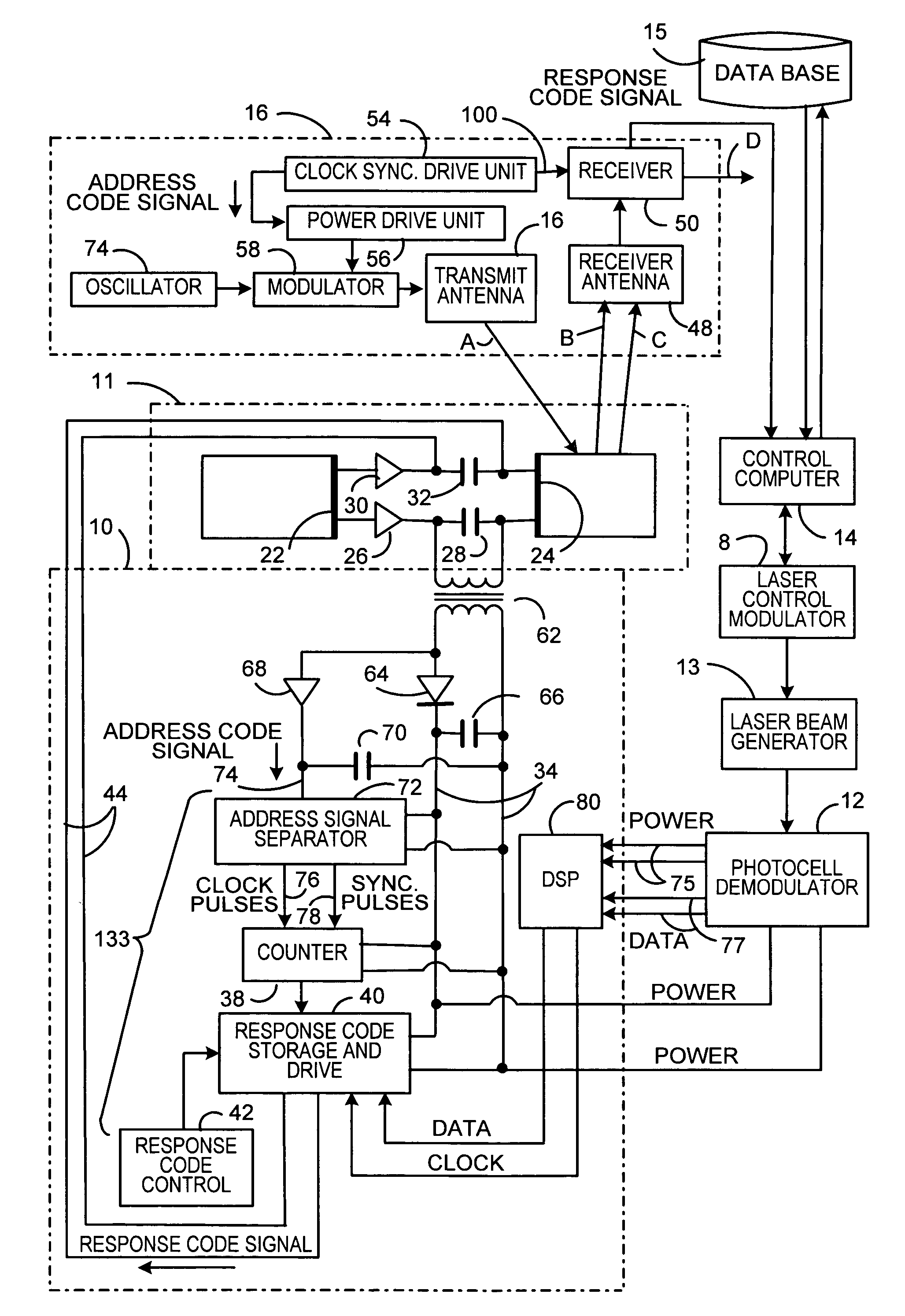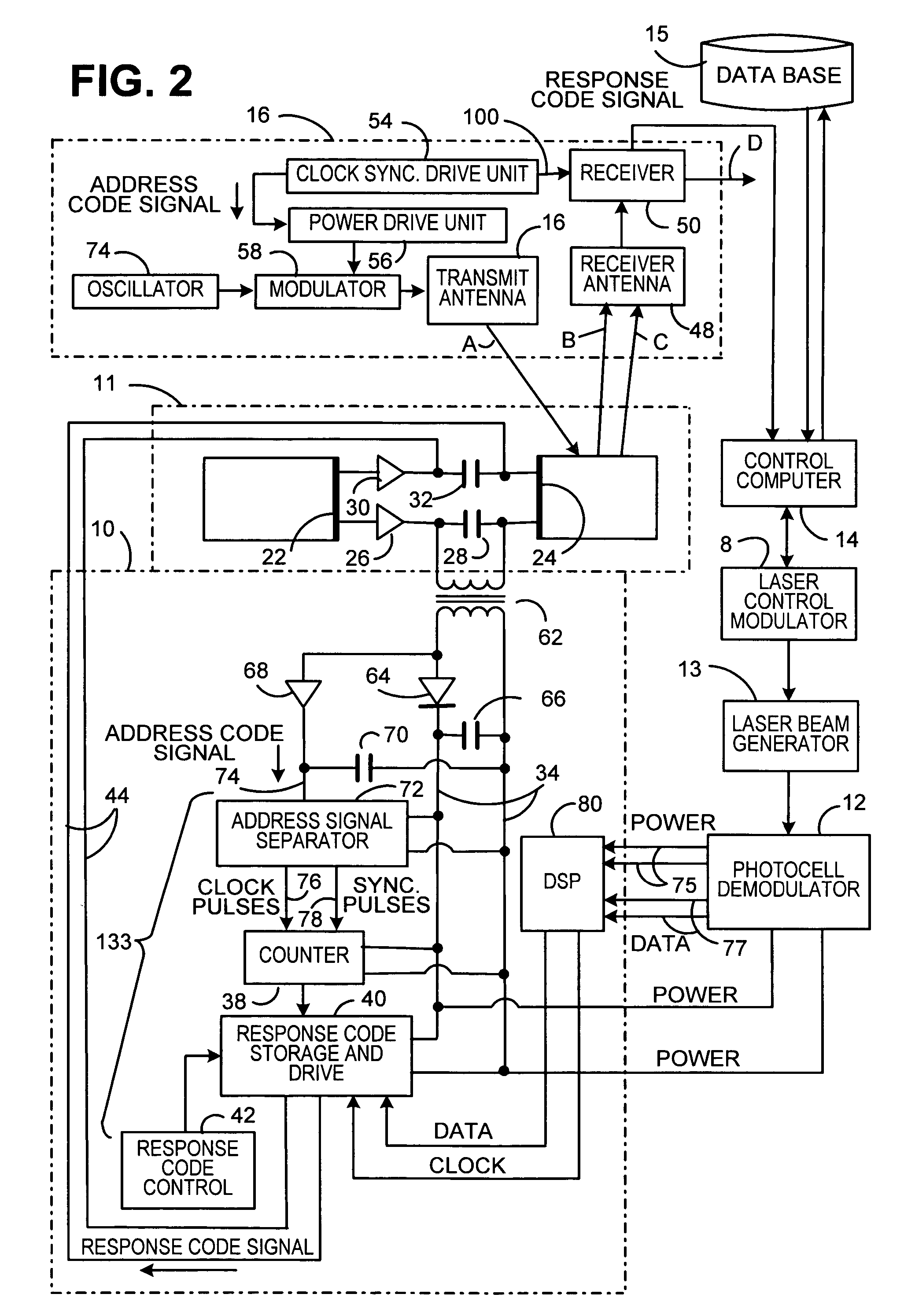Utilizing a laser to securely communicate with radio frequency identification tags
a radio frequency identification and laser technology, applied in the field of electronic systems, can solve the problems of limited electronic circuitry of rfid tags powered only by rf field energy, unintended parties may easily intercept information transmitted by rfid tags, and limited data storage space,
- Summary
- Abstract
- Description
- Claims
- Application Information
AI Technical Summary
Benefits of technology
Problems solved by technology
Method used
Image
Examples
Embodiment Construction
[0014] Referring now to the drawings in detail, and more particularly to FIG. 1, the reference character 9 represents a RFID tag. Tag 9 includes RFID circuit 10, which has a RFID tag antenna 11 attached thereto. RFID circuit 10 is coupled to photocell and demodulator 12. Demodulator and photocell 12 receives a light beam from laser beam generator 13. Generator 13 is coupled to modulator 8 and modulator 8 is coupled to laser control computer 14. Laser control computer 14 is coupled to data base 15 and computer 14 is also coupled to RFID reader 16, which has a RFID reader antenna 17 attached thereto. Computer 14, modulator 8 and generator 13 may be part of a bar code reader connected to the RFID reader 16. Computer 14, modulator 8, generator 13, reader 16 and antenna 17 comprise base station 7. Communications between RFID circuit 10 and RFID reader 16 would be performed as follows.
[0015] RFID reader 16 will cause RFID antenna 17 to transmit a radio frequency (RF) request signal via c...
PUM
 Login to View More
Login to View More Abstract
Description
Claims
Application Information
 Login to View More
Login to View More - R&D
- Intellectual Property
- Life Sciences
- Materials
- Tech Scout
- Unparalleled Data Quality
- Higher Quality Content
- 60% Fewer Hallucinations
Browse by: Latest US Patents, China's latest patents, Technical Efficacy Thesaurus, Application Domain, Technology Topic, Popular Technical Reports.
© 2025 PatSnap. All rights reserved.Legal|Privacy policy|Modern Slavery Act Transparency Statement|Sitemap|About US| Contact US: help@patsnap.com



